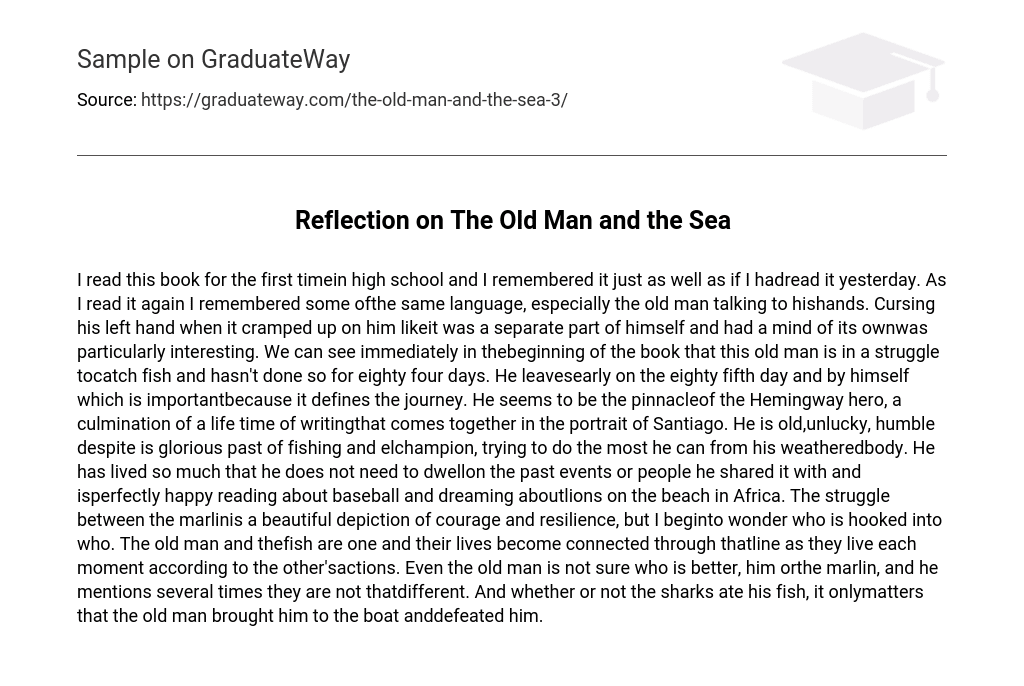I read this book for the first timein high school and I remembered it just as well as if I hadread it yesterday. As I read it again I remembered some ofthe same language, especially the old man talking to hishands. Cursing his left hand when it cramped up on him likeit was a separate part of himself and had a mind of its ownwas particularly interesting.
We can see immediately in thebeginning of the book that this old man is in a struggle tocatch fish and hasn’t done so for eighty four days. He leavesearly on the eighty fifth day and by himself which is importantbecause it defines the journey. He seems to be the pinnacleof the Hemingway hero, a culmination of a life time of writingthat comes together in the portrait of Santiago. He is old,unlucky, humble despite is glorious past of fishing and elchampion, trying to do the most he can from his weatheredbody. He has lived so much that he does not need to dwellon the past events or people he shared it with and isperfectly happy reading about baseball and dreaming aboutlions on the beach in Africa.
The struggle between the marlinis a beautiful depiction of courage and resilience, but I beginto wonder who is hooked into who. The old man and thefish are one and their lives become connected through thatline as they live each moment according to the other’sactions. Even the old man is not sure who is better, him orthe marlin, and he mentions several times they are not thatdifferent. And whether or not the sharks ate his fish, it onlymatters that the old man brought him to the boat anddefeated him.





